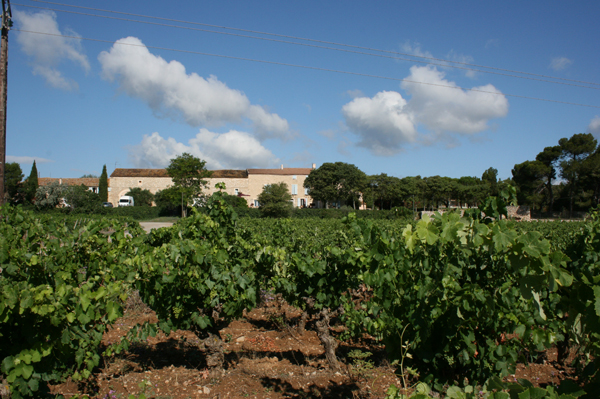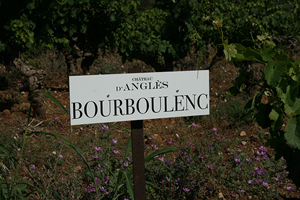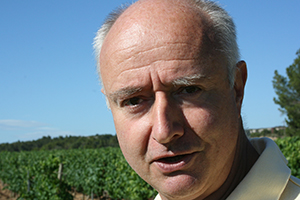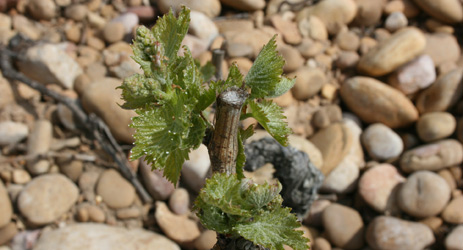Jefford on Monday
In contrast to exquisite Provence, where the hills tumble like dominos into the sea, coastal Languedoc is flat and sandy: bucket-and-spadeland. Visually un-thrilling, unless you’re five-and-a-half.

There are wine implications. Provence has altitude: that’s why its white wines often outshine its reds, and why most red grapes there end as pink wine. The Languedoc plain (IGP not AOC country) is adaptable, but its basic aptitude is for reds, and its greatest wines are probably old-vine Carignans.
Canny wine tourists should note, though, that coastal Languedoc’s topographical tedium does break at one point: La Clape. It must have been immaculate when the Romans arrived here: a thickly wooded limestone island studded with little lakes. Within ten centuries, we humans (with our drainage ditches, our lust for timber and our flocks of sheep) had reduced it to the ‘pile of stones’ its present-day name signifies. It was an island no longer.
The sea will never encircle it again, but the end of large-scale grazing on La Clape has beckoned the pine forests and the kermes oaks back to this massif just south of Narbonne. It is, once again, a haunting spot: windswept, light-lavished, resin-scented, braided with springy, needle-strewn paths which all lead to the sea. Past, of course, a vineyard.

Four out of every five bottles of wine produced on La Clape are red (and I’ll be writing about these in my Decanter magazine column in November), but it is white wine – and in particular blends crafted around the Bourboulenc grape variety – which make La Clape unique not just in Languedoc but in southern France as a whole.
DNA analysis pending, it would seem as if Bourboulenc is a member of the Clairette family, perhaps with Camarguais origins: it belongs down here in the light and the warmth. It enjoys an epic growing season in the airy, dry but dew-laden vineyards of La Clape: early budbreak, but it’s often still on the vines come October. Its skins, according to Eric Fabre of Château d’Anglès, are ‘armour-plated’. It’s often said to be high in acidity, but that’s not quite right; what it does have, in these soils at least, is a naturally low pH. Fabre says that his Bourboulenc often has a lowish TA of under 3 g/l (expressed as sulphuric acid, or 4.6 g/l expressed as tartaric), but it combines that with a very stable pH of 3.4 or so.
Elsewhere, it’s usually part of the blend for white Châteauneuf du Pape, but rarely much more than 10 to 30 per cent: Roussanne, Grenache Blanc and Clairette itself tend to take the lead near Avignon. Here in La Clape, by contrast, it’s the backbone of the blend. Newcomers are often suspicious of it – Gérard Bertrand says it took him a while to understand it, and Eric Fabre nearly uprooted all of his old-vine Bourboulenc after he arrived in the region (from his former job as technical director of Lafite) in 2001, though he now cossets it like a family heirloom. I asked La Clape’s president Christophe Bousquet of Pech Redon, Mas du Soleilla’s Peter Wildbolz and Bertrand himself to give me a Bourboulenc personality profile. The consensus was that it had lemon, citrus and vegetal notes, with a faint bitterness; that it was potentially tannic, and usefully structuring, with a subtle acid weave. Perfect blending material, in other words, and also ideal for discreet barrel ageing.

Much depends on the exact location of a vineyard on the massif, which peaks at 214 m, but La Clape can perform at least two tasks better than almost any other southern French whites. One of these (don’t ask me how, though the locals are convinced it is something to do with sea spray) is to taste sinewy and saline, like a sip of liquefied sea air: the 2013 white wine of Ch Mire l’Etang and the 2013 Le Marin cuvée of DomaineSarrat de Goundy both do this superbly. Le Marin is 70% Bourboulenc, while the Mire l’Etang is 40%. Ch de la Negly’sBrise Marine usually pulls the trick off, too, though I haven’t had a chance to try the 2013.
The other task is to furnish some of southern France’s most lavish, opulent and baroque oaked whites, which nonetheless contrive – thanks to the structuring power of Bourboulenc – to stay poised and gastronomic. Chd’Anglès’s Grand Vin Blanc has a dauntingly impressive track record (and when the 2013 is eventually on sale, it will surely be the best ever: classy and refined, alive with apricot, pine and lemon whispers), but other fine whites built in the same mould include Mas de Soleilla’s La Réserve Blanc (the 2011 is honeyed yet stony) and Gérard Betrand’sL’Hospitalet Grand Vin Blanc (the 2013 balances lemon, white flowers and pounded almonds). Bourboulenc is around half of the blend in these wines, with the balance generally coming from Roussanne and Grenache Blanc, sometimes with a little Rolle too.
Look out for other 2013 whites from La Clape too: the second-wine Classique from d’Anglès will offer great value when it reaches the market (excitingly vivacious lemon and pineapple with a saline cast); and other noteworthy wines from this vintage include the Arpègecuvée from ChRouquettesurMer (the perfect antidote to Sauvignon Blanc: a wonderfully fresh vegetal spectrum but without any overt greenness) and the compelling Albuscuvée from ChLaquirou (another 70% Bourboulenc wine: cascading peels and zests). With luck, too, La Clape will eventually get its long-awaited AOC a little later this year, joining the recently promoted Terrasses du Larzac. And then the secret will be out. 
Columnist Introduction
Andrew Jefford is a columnist for both Decanter magazine and www.decanter.com, Jefford has been writing and broadcasting about wine (as well as food, whisky, travel and perfume) since the 1980s, winning many awards – the latest for his work as a columnist. After 15 months as a senior research fellow at Adelaide University between 2009 and 2010, Andrew is currently writing a book on Australia's wine landscape and terroirs. He lives in the Languedoc, on the frontier between the Grès de Montpellier and Pic St Loup zones.
Click here to read all articles by Andrew Jefford>>
- Follow us on Weibo@Decanter醇鉴 and Facebook
and Facebook for the latest news and updates -
for the latest news and updates -
All rights reserved by Future plc. No part of this publication may be reproduced, distributed or transmitted in any form or by any means without the prior written permission of Decanter.
Only Official Media Partners (see About us) of DecanterChina.com may republish part of the content from the site without prior permission under strict Terms & Conditions. Contact china@decanter.com to learn about how to become an Official Media Partner of DecanterChina.com.


Comments
Submit